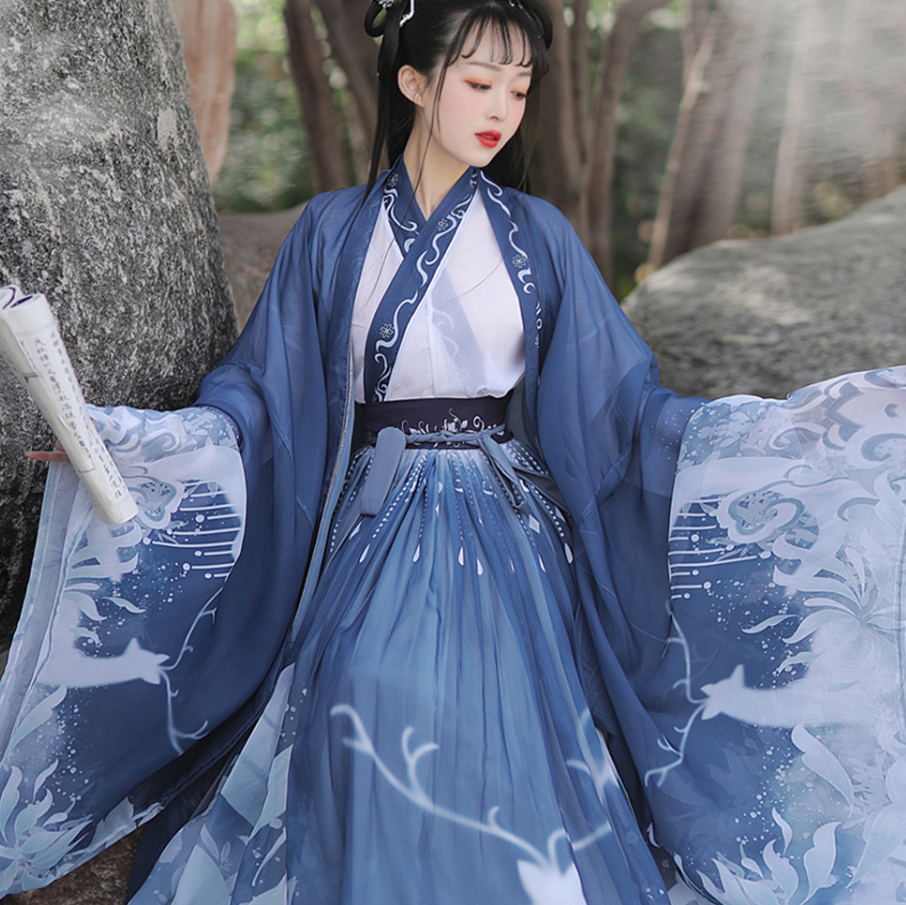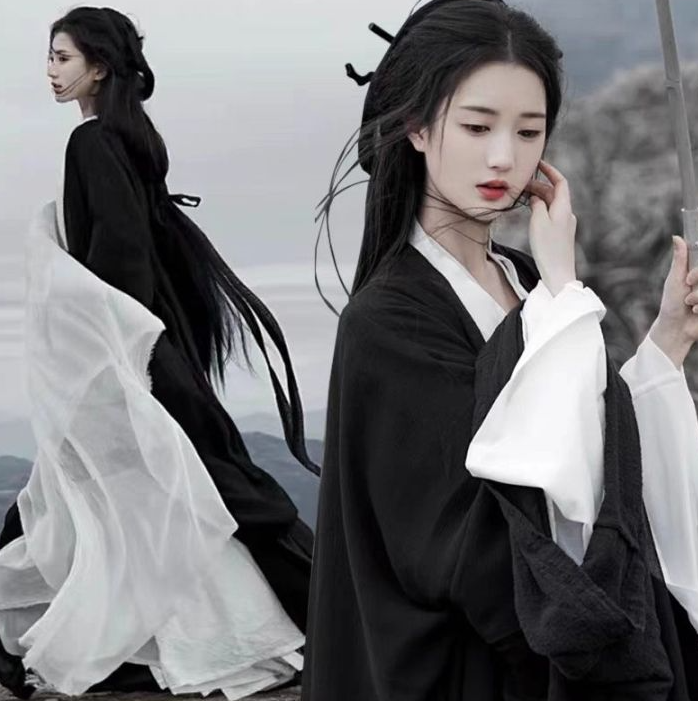A Journey Through the Colorful World of Hanfu Traditions
The vibrant tapestry of Chinese culture is intricately woven with the threads of tradition, and one of the most striking elements of this heritage is the Hanfu. This traditional Chinese clothing is not merely a garment; it is a testament to the rich history and cultural significance of the Chinese civilization. As we embark on this journey through the colorful world of Hanfu traditions, we delve into the profound meanings behind the hanfu color meanings, exploring how these colors have been symbolically and practically integrated into the fabric of Chinese society.

The Significance of Colors in Hanfu
Colors in Hanfu are not chosen at random; they carry deep symbolic meanings that have been passed down through generations. According to Wikipedia, in ancient China, the five cardinal colors—black, red, blue, white, and yellow—were considered to represent the five elements and directions, each with its own cosmic significance. These colors were used in various ceremonies and rituals, reflecting the social hierarchy and the philosophical beliefs of the time.
Red: A Symbol of Prosperity and Happiness
“Red symbolizes fire, which stands for warmth, vitality, and good fortune.”
This quote from a well-known figure encapsulates the essence of the color red in Hanfu traditions. Red is prevalent during festivals and celebrations, such as Chinese New Year and weddings, where it is believed to ward off evil spirits and bring prosperity. Its use in Hanfu is a visual representation of joy and auspiciousness.

Blue: The Color of Serenity and Wisdom
Blue in Hanfu is often associated with the heavens and the vastness of the sea, symbolizing tranquility and wisdom. It is a color that reflects the pursuit of knowledge and the aspiration for a peaceful life. As stated by a viewpoint from a renowned website, blue is also linked to the concept of ‘qing’ in Chinese culture, which denotes clarity and purity of heart.

Yellow: The Imperial Color of Earth
Yellow has been the color of the emperors in Chinese history, representing the earth and the center of the universe. It is a color that embodies power and authority. As mentioned in Baidu Baike, yellow was reserved for the imperial family, and its use in Hanfu was a clear indication of one’s status and connection to the imperial court.

The Cultural Evolution of Hanfu Colors
The evolution of Hanfu colors reflects the changing social, political, and cultural landscape of China. From the strict color regulations of the imperial era to the more colorful and diverse Hanfu seen today, the shift illustrates the growing influence of individual expression and the blending of traditional and modern aesthetics. As a certified celebrity opinion on YouTube suggests, “The modern revival of Hanfu is not just about wearing a beautiful garment; it’s about embracing the rich cultural legacy and adapting it to contemporary life.”

Conclusion
Our journey through the colorful world of Hanfu traditions has revealed the profound hanfu color meanings that are embedded in each thread and hue. These colors are not just visual elements but are deeply rooted in the philosophical, social, and historical context of China. As we continue to appreciate and study the Hanfu, we are not only acknowledging its beauty but also paying homage to the rich tapestry of Chinese culture that it represents.






